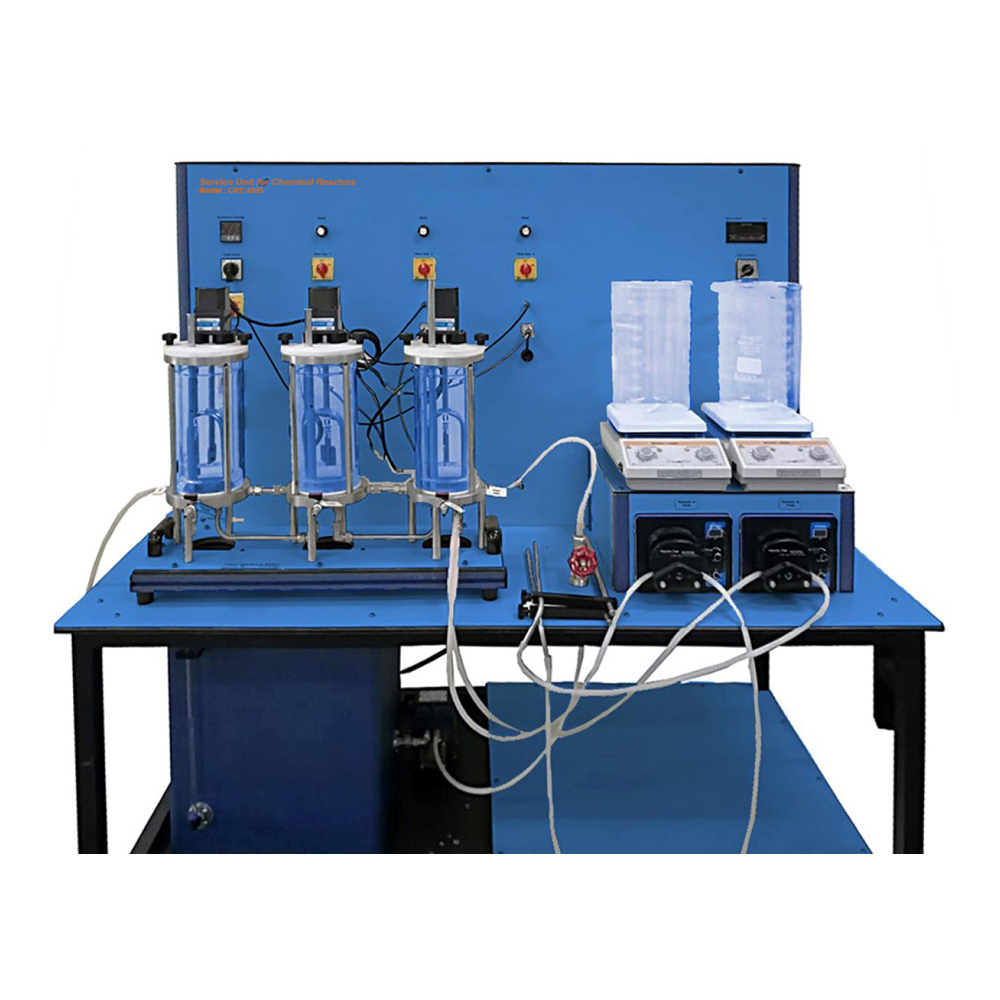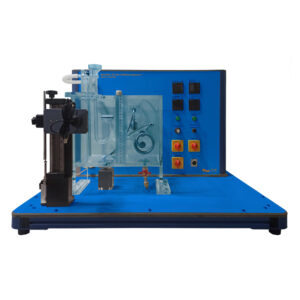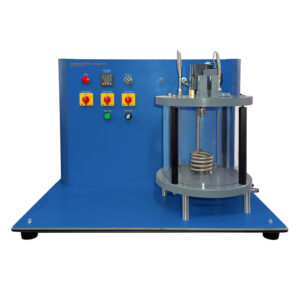The core component of a chemical production facility is the reactor. The reactants, or initial chemicals, interact in the reactor to create a new substance (product). The conditions for the best possible reaction process must be ensured by the reactor. The reactor’s temperature is the main issue here. Depending on the needs, various reactor types are utilized. The supply unit for six separate reactors is CRE-3305. The supply unit has the reactor to be studied mounted on it, and it is secured in place by two pins. Two reactant tanks are set up on the trainer to allow the reactors to run continuously. Hydraulic hoses link the reactor and supply unit together. For simple installation, the hoses have rapid release couplings. The two reactants are pumped into the reactor using two pumps. The pump speed can be changed to change how long the reactants remain in the reactor. The reactants in the reactor combine to create the final product.
For the product, an additional tank and pump are provided. To regulate the temperature of the reactor, the supply unit has a heating water circuit with a pump, tank, and heater. A sensor that measures temperature and conductivity simultaneously is used in the reactor. The stirrers in the various reactors can be started using the controls found in the switch cabinet.
Technical data
Peristaltic pump for reactants
- Max. Flow rate: approx. 0.02~2200mL/min
- Speed: < 600rpm
- Drive: Variable Speed
Peristaltic pump for products
- Max. Flow rate: approx. 0.02~2200mL/min
- Speed: < 600rpm
- Drive: Variable Speed
Water pump
- Max. Flow rate: 10L/min
- Max. Head: 30m
- Power consumption: 500W
Heater
- Power consumption: 4500W
- Quantity: 3, 1500W each
- Heating water capacity: 25L
Feed storage vessel
- Vessel: 4L
- Magnetic Stirrer with heated base
Measuring ranges
- Conductivity: 0~200mS/cm
- Temperature: 0~60°C
Software: CRE-3305SW
DAQ software specially designed in National Instrument™, LABVIEW™ environment to measure and calculate the results of apparatus. The software is optional and while using software a set of electronic sensors are included. Software can be run with any Windows™ environment.




